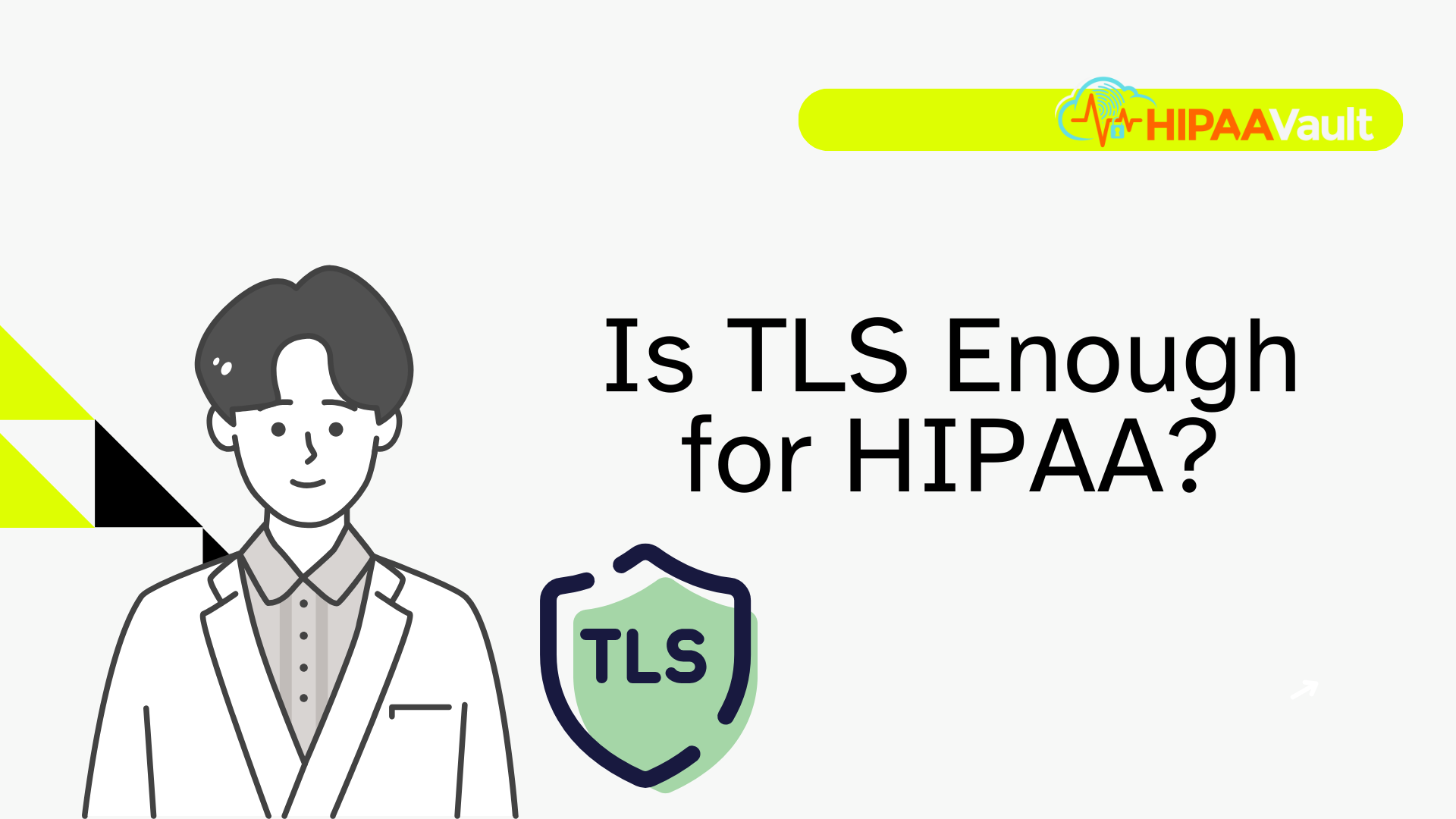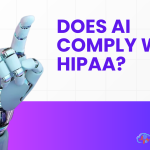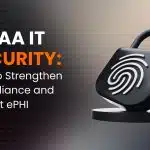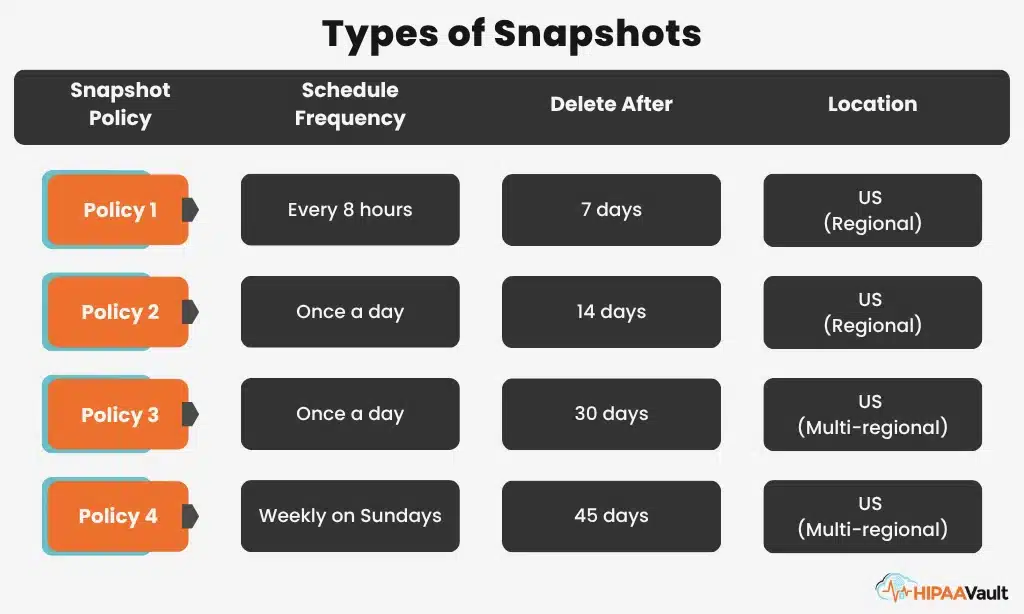In today’s digital healthcare landscape, safeguarding Protected Health Information (PHI) is more than a legal obligation — it’s a foundation for trust between patients and providers. As cyber threats grow more sophisticated, many organizations turn to Transport Layer Security (TLS) to encrypt data in motion. But when it comes to HIPAA compliance, one critical question emerges: Is TLS alone enough to satisfy the law?
The short answer? No. While TLS is essential, HIPAA compliance requires a layered approach to data protection that goes far beyond encrypting transmissions.
What TLS Does — and Why It’s Not a Complete Solution
TLS is a cryptographic protocol designed to secure data as it moves across networks. It’s most commonly used to power HTTPS websites, secure APIs, encrypt emails (via STARTTLS), and protect remote access. When a patient submits information through an online portal, for example, TLS ensures that the data cannot be intercepted during transmission.
However, this protection ends once the data reaches its destination. At that point, if the data is stored unencrypted or handled without adequate access controls, it becomes vulnerable again. This is where TLS, while powerful, shows its limitations. It does not secure data at rest, manage user access, or maintain audit trails — all of which are required under HIPAA’s Security Rule.
Secure Your Healthcare Operations with Full HIPAA Compliance
HIPAA Vault provides end-to-end compliance services — from secure hosting to expert risk assessments and 24/7 support.
Get a Free Compliance AssessmentHIPAA’s Encryption Requirements: What the Law Actually Says
Contrary to some misconceptions, HIPAA does not mandate a specific technology like TLS. Instead, it outlines general requirements for transmission security under 45 CFR § 164.312(e)(2)(ii), stating:
“Implement a mechanism to encrypt electronic protected health information whenever deemed appropriate.”
Encryption is considered an “addressable” implementation specification. That means covered entities and business associates must implement it if reasonable and appropriate, or adopt an equivalent alternative and document the rationale. In practice, TLS is considered a standard encryption mechanism for protecting PHI in transit — but only if properly configured and maintained.
You can read the full HIPAA Security Rule guidance at HHS.gov:
https://www.hhs.gov/hipaa/for-professionals/security/index.html
Why TLS Alone Doesn’t Fulfill HIPAA
TLS addresses only one piece of the compliance puzzle — protecting PHI during transmission. But once the data is received by a server or endpoint, TLS does nothing to prevent unauthorized access, ensure proper storage, or maintain records of who accessed what and when.
HIPAA requires covered entities to implement additional technical safeguards, including:
- Access control mechanisms that restrict PHI access to authorized personnel
- Audit controls that log system access and activity
- Integrity controls that prevent improper data alteration
- Transmission and storage encryption to protect data at rest
TLS also needs to be properly implemented to be effective. Using deprecated versions (like TLS 1.0 or 1.1), weak cipher suites, or self-signed certificates can open the door to exploits such as man-in-the-middle attacks. Poor certificate management or failure to rotate keys can further erode security.
The bottom line: TLS is necessary but insufficient for HIPAA compliance.
Best Practices for TLS in HIPAA-Compliant Systems
TLS should be viewed as one part of a broader, layered defense. To maximize its effectiveness in a HIPAA-regulated environment, healthcare IT teams must:
- Enforce TLS version 1.2 or 1.3 across all services and disable outdated protocols like SSL, TLS 1.0, and TLS 1.1.
- Use strong, modern cipher suites with perfect forward secrecy (PFS) to prevent decryption of data if keys are compromised.
- Deploy certificates from trusted Certificate Authorities (CAs) and set automated renewal to avoid expired or misconfigured certs.
- Use mutual TLS (mTLS) for sensitive API traffic, ensuring both client and server authentication.
- Monitor for failed TLS handshakes and log certificate usage in a centralized security platform.
For more technical details, consult NIST’s guidelines in Special Publication 800-52 Rev. 2:
https://csrc.nist.gov/publications/detail/sp/800-52/rev-2/final
How HIPAA Vault Enhances TLS with Full-Spectrum Compliance
At HIPAA Vault, we recognize that TLS is only the first line of defense. That’s why our HIPAA-compliant hosting and cloud services are built with a full-stack approach to data security. TLS 1.2+ is enforced across all services — from HTTPS portals to encrypted email and SFTP access — using hardened configurations and validated encryption modules.
But beyond TLS, our infrastructure includes:
- AES-256 encryption at rest, protecting PHI stored in databases and file systems
- Role-based access controls and multi-factor authentication to restrict user access
- Real-time security event logging and centralized SIEM monitoring
- Pre-hardened environments with intrusion detection and patch management
- Signed Business Associate Agreements (BAAs) covering all hosted services
By combining TLS with encryption at rest, robust access policies, and 24/7 monitoring, HIPAA Vault delivers true end-to-end compliance — not just encryption in transit.
Conclusion: TLS Is a Must — But Not the Finish Line
TLS is a critical security protocol for protecting PHI in motion. It is a key part of any HIPAA-compliant architecture — but by itself, it doesn’t meet the full requirements of the HIPAA Security Rule.
To protect PHI at every stage — in transit, at rest, and during access — healthcare organizations must implement layered defenses that go beyond TLS. This includes secure hosting, encryption at all levels, access management, audit logging, and documented policies.
Looking to ensure your infrastructure exceeds HIPAA’s encryption requirements?
🌐 Explore HIPAA Vault’s fully managed, HIPAA-compliant cloud hosting today.








